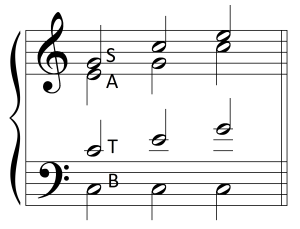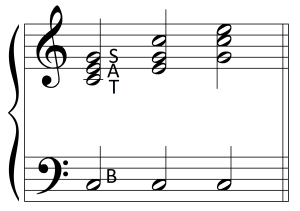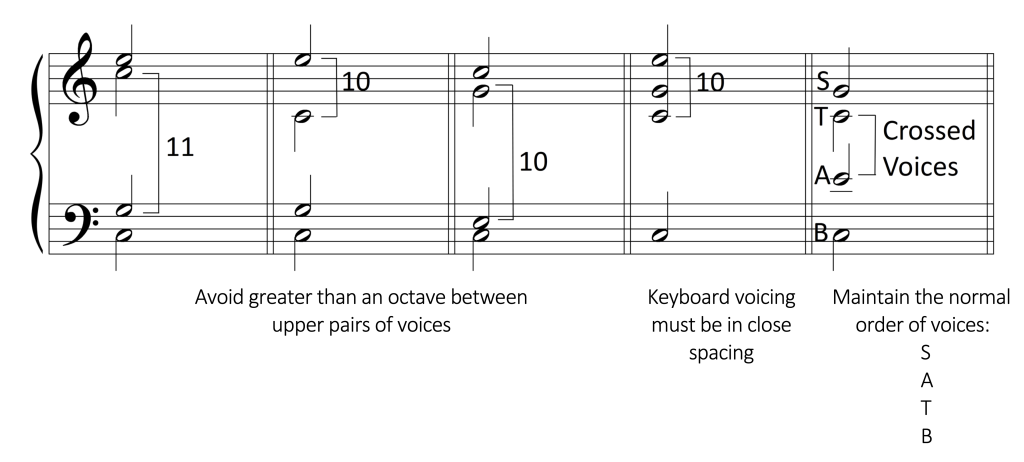1 Harmony in Four Voices
Standard ranges of the four voices:
Voicing and Spacing
The most stable chord structure has the root of a triad in the bass voice, resulting in a triad that is in root position. To create a four-part SATB chord out of a triad, double the root of the chord (1-1-3-5). For example, a C major chord in four voices has two C’s, an E, and a G.
Keep each voice within its typical vocal range as shown above.
A. Voicing
There are two types of voicings:
- In choral voicing the soprano and alto occupy the upper staff, while the tenor and bass occupy the lower staff. The stems are split up or down accordingly: soprano stem up and alto stem down on the treble clef; tenor stem up and bass stem down on the bass clef.
- In keyboard voicing the soprano, alto, and tenor voices occupy the treble clef. The bass is placed alone on the bass clef. Follow the rules for stem directions.
B. Spacing
There are two types of spacing.
- In close spacing the soprano, alto, and tenor voices are close together within an octave. The bass may be more or less than an octave from the tenor.
- In open spacing there is a missing chord tone between the soprano-alto and alto-tenor voice pairs. There can be no more than one octave between the soprano and alto, or between the alto and tenor voices. The bass may be more or less than an octave from the tenor.
Choral voicing can be in close or open spacing. Keyboard voicing is typically written in close spacing.
Close spacing can be converted into open spacing by lowering the alto by one octave.
The abbreviations written in the example above indicate the type of spacing/voicing and the interval between the bass and the soprano. For example:
- ‘C5’ means choral close spacing with the soprano a compound fifth over the bass
- ‘O8’ means choral open spacing with the soprano a compound octave over the bass
- ‘K3’ means keyboard voicing with the soprano a compound third over the bass.
In exercises throughout this textbook, these symbols will be used as a guide to indicate the starting soprano position.
common mistakes in four voice harmony
Potential spacing mistakes to avoid:
Practice


